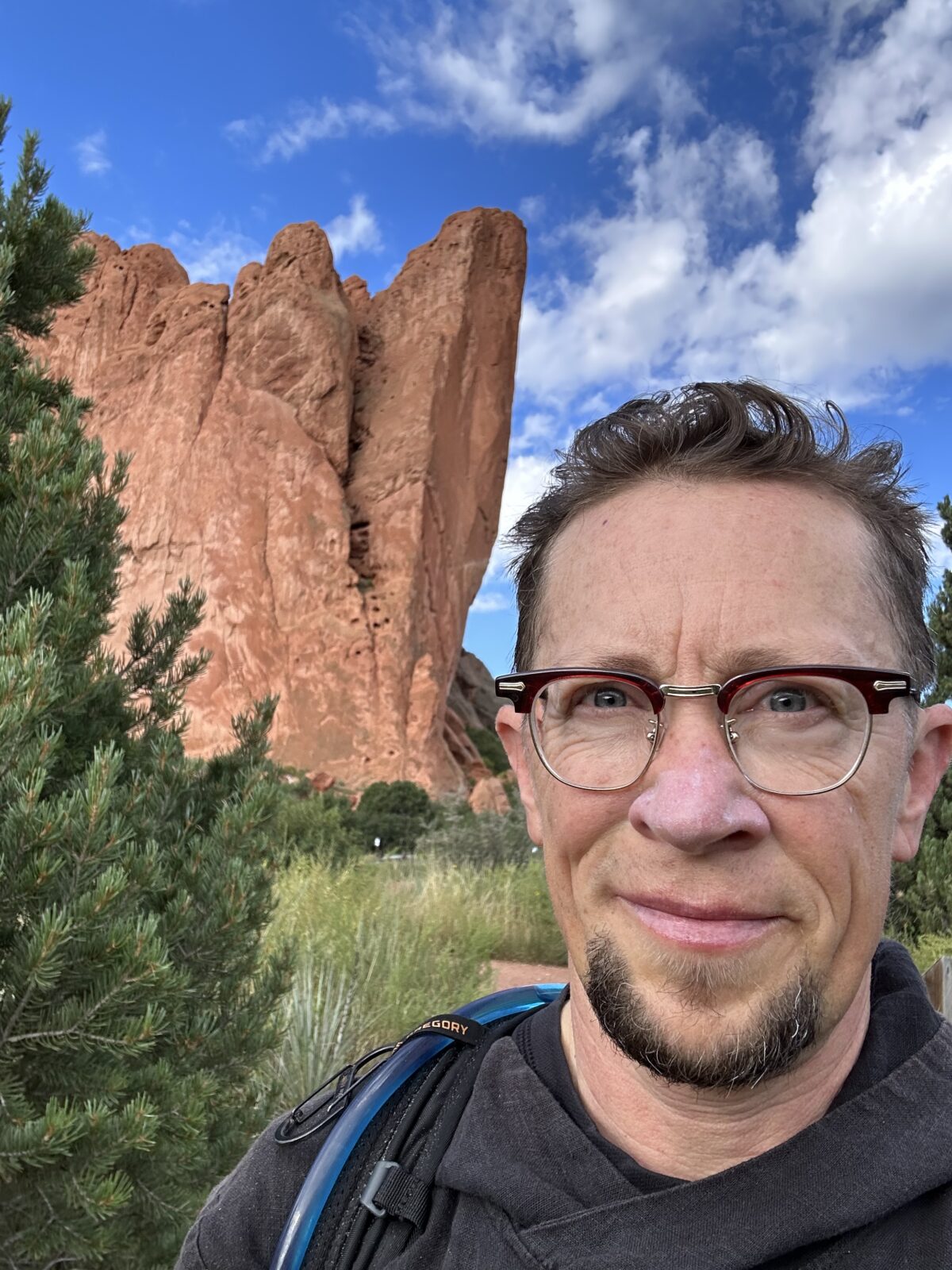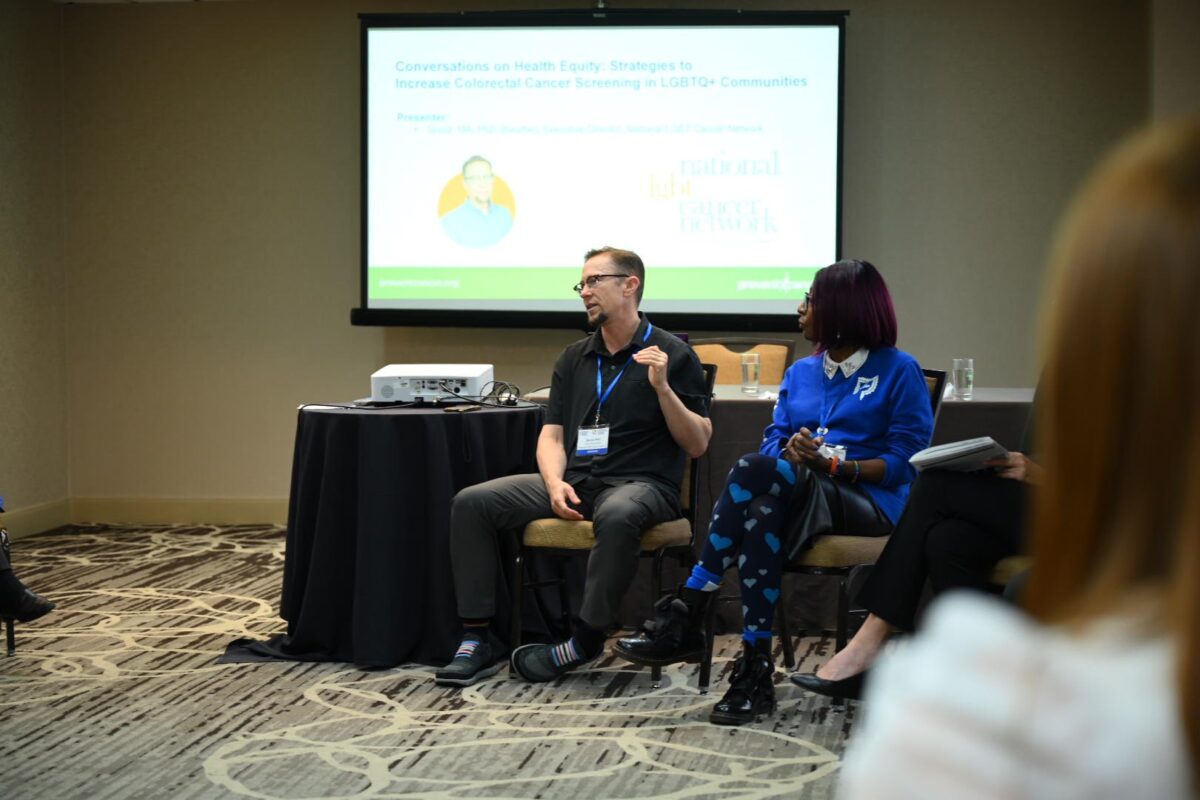
This interview has been edited for length and clarity.
How did you get involved with the National LGBT Cancer Network?
Originally, I was running the Centers for Disease Control and Prevention (CDC)’s LGBTQIA+ Tobacco and Cancer Disparity Network, but I had a good colleague and friend at the National LGBT Cancer Network. We originally subcontracted with the network when our project was based at the National Association of LGBT Community Centers. We then realized the more natural home for the project was at the National LGBT Cancer Network itself, and the executive director of the network at the time was very interested in having our project transitioned over.
After about a year and a half, the executive director decided to retire. She asked me, “Will you please take over the organization?” Not too long after that, the reins were handed over to me, and it was like, alright—go gang busters. What can you do with this?
What does Transgender Awareness Month mean to you and your organization?
For me personally, it’s kind of a heavy month, because anchoring it in the middle is the first—and for the longest time, the only—trans awareness day that we had for many years, National Trans Day of Remembrance (TDOR). TDOR memorializes people who have been murdered in the year prior for being trans.
For many of us, we didn’t have Trans Awareness Week and Trans Awareness Month until more recently. It’s a heavy time for many people who are trans and/or allies for the communities, as we take stock on the level of aggression that we experience from the general population.
To put things in perspective, the Southern Poverty Law Center did an analysis that found the number of murders committed each year for trans status exceeded the number of murders for all other groups that experienced similar hate crimes. Considering the trans community is so much smaller than any of those other groups, that’s a strong point about the level of aggression that we live in fear of on a daily basis.
What is the National LGBT Cancer Network doing to raise awareness during Transgender Awareness Month?
For us, it really is a yearlong effort. I was just explaining to someone the other day that most audiences are really interested in trying to understand trans people, gender non-conforming (GNC) people and non-binary people. People have a pretty good awareness of the “LGB” population, but the “T,” gender nonconforming and non-binary population is still something that people have less familiarity with. So, while we acknowledge and recognize the months, our investment lasts all 12 months.
As we’re talking about Transgender Awareness Month, one of the things that really sits with me is the huge increase in the number of youths identifying as GNC, non-binary or transgender of some stripe. That increase in the number of youths who feel comfortable enough to disclose is an incredibly positive sign for our communities and our population. More youth are feeling emboldened to speak their truth and I think that that’s really exciting as far as what the next generation might bring to the table.
What do you think is the most important issue impacting people who are transgender broadly, as well as in the cancer space?
The biggest issue right now is this epidemic of anti-trans legislation being introduced in states around the country. There were over 500 bills introduced this legislative session alone, and almost all of them were anti-trans specifically. These bills are having some big consequences right now—not only do we see gender affirming clinics being shuttered around the country, but we’re also seeing a brain drain of people wanting to leave the states that are more hostile. A recent survey from Equality Florida told us that 80% of trans people in Florida are trying to move out of the state because the current environment is so hostile.
This migration makes our life at the network harder because when you’re worried about whether you’re going to get your hormones this year but we’re trying to encourage you to get a colonoscopy ten years down the road, it just means that our message is not as urgent, and the issue is not as urgent. It’s a pretty hard place to be when people are worried about whether they can get safe housing, a safe neighborhood or access to a doctor to get the ongoing care that they need.
Another issue is that we aren’t measuring the impact on our communities very well. This is spiking our existing level of medical mistrust, but we don’t have the resources to start monitoring and figuring out how some of those things are changing. Without measuring them, we’re only seeing a few points of light in a big, complicated room.
What types of resources does the National LGBT Cancer Network provide for the transgender community?
We were happy to have debuted a website related to trans people going through cancer treatment a few years ago. We try and help providers be more welcoming for all our communities. We also create many tailored resources that other organizations can use as members of our network (which is free to join). We think of ourselves as a garden center that gives away a bunch of tools, knowing we don’t always have the “land” because we don’t offer direct patient services aside from our support groups. Therefore, we are interested in making the best possible rakes, shovels and other tools for those with a patient base so they can do a better job at making sure they are welcoming to the local patient population, particularly the trans and gender nonconforming people.
What do you think other groups and health care organizations can do to support the transgender community?
One thing we say a lot is, “Please don’t wait for us to create all the resources!” We have a mile-long list of the things we want to do. If anybody comes to us and asks, “Do you happen to have this?” Our answer is—unfortunately—probably not yet, but we want to get to it. We really encourage everybody in this space not to solely rely on the specialty groups, but instead, create their own resources and share them with us so we can put them in our library for others to use.
If we all work together in this way—and we’re happy to consult with other organizations—we will end up populating a huge toolbox of resources much faster. My advice would be use your expertise, whether it’s patient outreach or a specific type of cancer and create something that can add to that toolbox.
The National LGBT Cancer Network does a lot to educate other groups on how to create safe spaces. What is one thing you would suggest providers do to contribute to creating safe spaces?
The first thing is to set yourself free from the mindset of “we treat everybody the same,” because people often have that as the end of their equation. Think about how you can convey that to us before we even get in your door.
A slightly newer resource that is incredibly powerful in this area is putting your pronouns on your lanyard, your nametag, in your email signature or on your staff listing because that doesn’t say you’re LGBTQ at all. It just says you acknowledge that misgendering is a big problem for a population that experiences a lot of disparities, and you don’t want to add to it.
We see pronouns, it’s a huge relief because it tells us someone gets one of the basic principles that we struggle with. You may not be perfect in trans care or even using the right pronoun, but adding your pronouns wherever you can is a great, powerful message that you are starting to understand what an underrepresented, underserved population experiences.
What does it mean to you to have a partnership with the Prevent Cancer Foundation?
I think the partnership with the Prevent Cancer Foundation has been fruitful and illustrative for us because I love the smaller, community grants you put out there. You’ve introduced us to several organizations who are doing LGBTQ inclusive work that we haven’t even heard of.
For example, I got to hear more details about one of those grantees—Cheeky Charity—at the National Colorectal Cancer Roundtable Annual Meeting a few weeks ago. We heard about some of the innovative ways they are finding strategies to raise awareness about colorectal cancer screening for the queer community. You would not guess some of the things that they’ve come up with. Not only are they working with nude hiking groups in Palm Desert, but they’re working with the local zoo and taking pictures of giraffes as another way to highlight awareness around getting your “butt screen.” That kind of ingenuity and partnership is exactly the way we’re going to reach more ends of our community. By giving out these grants, we end up with a whole new group of people we’ve never engaged with.
For additional information about cancer and the LGBTQ+ community, visit the Prevent Cancer Foundation’s resources page. To learn more about the National LGBT Cancer Network, visit cancer-network.org.

No Comments